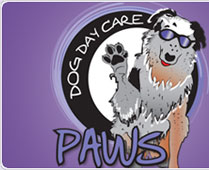Dog Daycare Demographics
![]() Using Demographics to Determine Your Dog Daycare Client Base.
Using Demographics to Determine Your Dog Daycare Client Base.
A note before we get deep into demographics, you must understand that client base demographics are the single most important factor in your success, it does not matter how nice or modern your Dog Daycare facility is or how many services you provide. If you open in an area that does not have the proper customer base to support it, it will fail. Just because your city or town does not have a dog daycare does not mean that it can support one, nor does it guarantee success in that area if you open one. In this section I will explain the things you need to know about demographics if you want to open a successful Dog Daycare facility. A good place to start this research is www.city-data.com and http://en.wikipedia.org. Begin your Dog Daycare knowledge quest by looking at the census information, as it will provide information that you need to seriously research your area before opening.
![]() Understanding Dog Daycare Demographics
Understanding Dog Daycare Demographics
In the following Paragraphs we will explore exactly how you break down the demographic information for the area in which you plan to open a dog daycare. We will use information obtained from the two sites listed above to break down in detail how to determine the number of dogs available for your proposed Dog Daycare.
Location: Florida City: Average Town
Population: 46,451*
*This is a deceptive figure and one that you need to analyze much closer if you really want to get a good idea of how many customers are really available for a Dog Daycare business.
The first step in doing this is to determine the number of households in your area, based upon population. In the event that you are unable to obtain this figure then use the population for your area and divide by 2.67 (the national average for individuals per household) this may give a smaller number of households making your figure more conservative and letting you err on the side of caution.
The average household size was 2.25.
46451 (population) / 2.25 (average individuals per household) = 20,644 households
The next step is to determine the actual number of dog owning households in the area as these are potential customers for your Doggie Daycare. We do this by going to the American Veterinary Association Web site and clicking on Market Research Statistics and then onto United States Pet Ownership or you can simply click here.
There you will find that you need to take the number of households in your area and multiply it by .361 (36%) to find out how many of these households actually own dogs and could be future Dog Day Care Customers.
20,644 households x .361 = 7,452 dog owning households in the area
Now thanks to the efforts of numerous pet supply companies, veterinary organizations and the millions of dollars that they spent on market research it has been determined that the average dog owning household has 1.6 dogs. This allows us to complete the next part of the equation, which is to multiply the number of dog owning households by 1.6 and determine that actual number of dogs in the area for the Doggy Day Care we wish to open.
7,329 Dog owning households x 1.6 = 11,923 Dogs in this area.
This is the point where industry experience comes into play, as there is a lot more to this figure that needs to be said. First off, looking at the above number it would seem that this proposed Dog Day Care location is going to be overwhelmed with dogs, especially if it is the the only facility in the area. The problem is that while this number may look great if you want to open a veterinary facility, it may not be ideal if you want to open a Doggy Daycare. The reason for this is that all cities have laws in place that stipulate the fact that dogs must be vaccinated for the protection of the public and to prevent the spread of disease, and virtually every dog will have to go to a vet at some point during their life. Yet there is no requirement either legally or for the sake of the dogs health that they need attend dog daycare on a regular basis. So the number above is not an accurate representation of the number of dogs availableto you as potential Doggy Daycare clients, it is merely a good estimate of the total number of dogs in your area. If you decide to open your business based solely on the above figure then your profits are not going to be what you expected and if you based your expenses on what you expected to make then you may be in some serious trouble.
To actually refine this figure and make it useful for someone that wishes to open a dog daycare then we have to factor in a number of different variables that create a more accurate representation of how many potential Dog Daycare clients are available. This is done by understanding your target market and further analyzing the demographics in your area as follows:
Our research has determined that people are not willing to drive or deviate from their commute more than 5 miles to take their dog to daycare or 2.5 miles in one direction, it would be inconvenient for them to travel a great distance out of the way while going to work, in morning traffic just to bring their dog to you for daycare, and they would have to get up earlier and nobody wants to do this. So in actually you have 20 square miles from which to pull your clients from. You need to imagine a circular radius extending out from your proposed location 2.5 miles in every direction. This is where the majority of your clients will come from.
So the next number that you need is the population density for the area that you plan on opening your dog daycare. This figure is also provided by www.city-data.com and tells us that for every square mile we have 2071 people per square mile or 41420 people within our business radius, 11.9% less than the population figure of 46,451 which reflects the population of the entire city.
-
53.2% were married couples living together
-
20.8% of households had children under the age of 18 living with them
-
10.1% of the population is below the poverty line
Dog Daycare is a luxury service, and one in which people will need to have the disposable income available if they wish to participate. Your clients will generally be from the middle to upper class sections of society and it is unlikely that those below the poverty line will utilize your services. So the first step is to subtract out those individuals that more than likely do not have the income available to bring their dog to daycare.
41,420 (population) – 10.1% (below poverty line) = 4,183 individuals below the poverty line,
Leaving 37,237 above the poverty line.
The vast majority of your clients will be two income families without children; this allows them to spend on their pets what would have been spent on children. To further refine the actual numbers of dogs available to you for your dog daycare we take the population in your business radius above the poverty line and subtract those unmarried individuals.
37,237 (population in business radius above the poverty line) x .532 (53.2%) =
19,810 married individuals or 8,804 married households.
The next step is to subtract the 20.8% of households that have children.
8,804 (married households) x .208 (20.8%) = 1,831 households with children
This leaves 6,973 households without children.
To go even further we need to look at the age spread of the population in the area
-
18.7% under the age of 18
-
5.4% from 18 to 24
-
21.0% from 25 to 44
-
24.2% from 45 to 64
-
30.7% 65 years of age or older
-
Median age for the area is 49
As covered above most of your clients are going to be individuals that work and have multiple incomes. The age ranges of your typical dog daycare customer will be between 25 and 64 (65 is retirement age and they no longer have a need for daycare, under 25 and they more than likely have not established themselves or do not have the income available to pay for your services). This is not a perfect demographic as the median age of this community combined with the percentage over 65 tells us that this is a retirement community- not a hustling bustling upper middle class neighborhood. The one note about retirement communities is that there will generally be a lot of doctors in the area making your 25-44 year old demographic more wealthy. Optimally you would want greater than 50% of the area population to be in the 25-64 age group the higher the better and 15% or less for the 65 or older age group. Now take the new figure of 6,973 households and subtract 36.1% (5.4% for the 18-24 age group and 30.7% for the 65 + age group; the under 18 group is children and has already been accounted for by making the household number reflect only those households without children)
6,973 (married households above the poverty line without children and within your business radius) x .361 (36.1%) = 2517 households out of target age range.
This leaves 4,456 households without children within target age range
4,456 x .361 (AVA figure for determining dog owning households) = 1,608 dog owning households that meet our criteria ( x 1.6 AVA figure for determining actual dogs) =
2,572 dogs (89% less than the original number of 11,923 dogs.)
-
The median income for a household in this area was $33,193
This is a little lower than ideal but there is still enough income available to support a small well managed and efficiently operated facility.
![]() Optimally want the median income to be above $42,000 per year.
Optimally want the median income to be above $42,000 per year.![]()
This leaves a total of 1608 dog owning households with a total of 2,572 dogs within the area that meet our criteria. Our research shows that between 3% and 5% of these individuals will take their dog to daycare if it is available leaving us with with a low total of 77 households and 123 dogs. A 98% drop from the 11,983 dogs that we originally started with!
This is the reason it is so important to offer additional services to bring clients in the door. Dog Daycare by itself is generally not a large enough draw in these average income communities to bring in the amount of customers needed to make the business truly profitable. However by adding boarding and grooming services you can increase the number of clients available to you by 300%-600% as well as increasing your income by 200%-$400%. This is also depends upon the price of your services and you have to make it affordable if you want to bring in more clients. If you offer additional services such as Dog Grooming you can generally charge less than other groomers in the area to build clients as you have multiple streams of income available to support your business, all the while keep in mind that you are in this business not just because you love dogs, but to make a profit!!. It’s much easier to sit at home on the couch making nothing than to work 12-14 hour days, 6 days a week and make nothing.
You need to do solid research before opening a Dog Day Care facility. The most important part of that research is basing your decisions on fact, not on what you believe that you know about your community or whether or not your area currently has a doggie daycare. In fact, your area may not be a suitable location to support a dog daycare and this is the actual reason your community may be lacking one .
Your decisions need to be based on real numbers and facts if you plan to succeed.
Purchase the entire 217 page Dog Daycare Start Up Manual
(Instant download upon checkout)
$24.99
All products are available for instant download upon checkout
No products are shipped or otherwise available in hardcopy or paperback form
Comments
You mention we should deduct those age groups (18-24 and 65 over) from our new household number. I'm confused about removing those individuals from my household number as households are two ppl, right? I have 5,951 households w/o children in my target area. There are 1,148 individuals that fall into the 0-18 & over 65 group. I'm not seeing how this isn't detrimental to my overall household number. Anxiously await a reply. Thanks.
I am studying at Ohio University. I have found your site very helpful but I am looking for some explanation in the demographics portion of the website.
I understand finding dogs in the area, but I am having trouble with using the site you list, "city-data.com." For the information listed such as married couples, households with children under the age 18 year old, and population below the poverty line- are these statistics from city-data.com? Also, from this same set of information listed, are those statistics for your target population, or are they city average statistics?
As stated previously, your site is extremely helpful, however the second section of the demographics is a little unclear. I would appreciate any help you can give me.
Thanks,
I can see that they have changed their site a bit since I originally wrote the information, but I believe the answers to your questions can still be extrapolated by using that site in conjunction with other sources.
City data still seems to have decent info on the poverty statistics but due to changes in their site, I find some of the other statistics to be a bit suspect. As a result I would probably default to the most reliable although maybe not the most straight forward source and check the US census bureau website.
For my area I would go to the following:
http://factfinder2.census.gov/faces/tableservices/jsf/pages/productview.xhtml?src=bkmk
http://quickfacts.census.gov/qfd/states/12/1258350lk.html
For any other area start here: http://www.census.gov/#
Then type your location in the search box located towards the upper right hand corner.
Okay, I will look at the other sites. However, I am still confused whether the "married couples," "married couples with children," and "poverty percentage" statistics came from the overall city demographics listed from the census, or if those statistics came from your "idea business population" you established by multiplying people per square mile x 20 square miles?
The original numbers come from the census or demographic information that is available. Once you have the "gross number" you can then widdle that down based upon the population density per square mile. For example, although it does not specifically list that their are "x" married, unmarried, with/without children within my area, it does tell me that they make up their individual percentages as part of the total. So for example; the data tells me that there are 100,000 people in area "y" and 20% of those are married. I find my population density and determine that their are only 90,000 people in my target area. I can still use the 20% figure from the total against my target area total to determine that within that 90,000; 18,000 are married. Hope that answers clears it up a bit.






